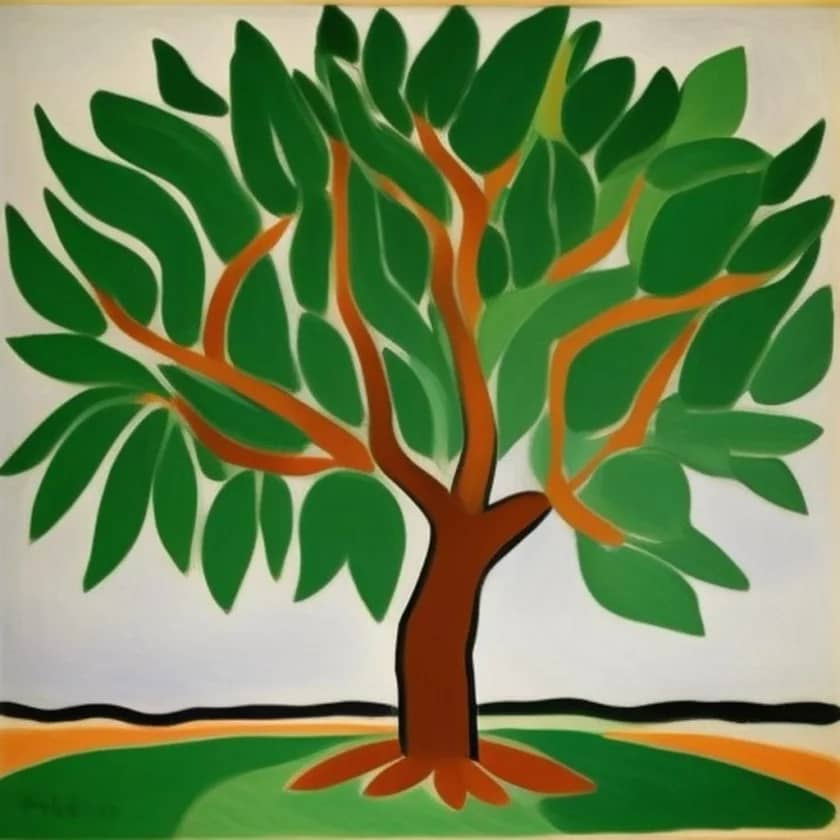The chestnut tree and its symbolism
Chestnut trees are known for various qualities, including symbolism and cultural significance.
Here are some of the key associations and symbolic meanings of chestnut trees:
- Longevity and Endurance: Chestnut trees are often associated with longevity and endurance because they can live for several centuries. Their ability to withstand the test of time is a symbol of resilience and strength.
- Abundance and Nourishment: Chestnuts have historically been a significant source of food in many cultures. The nuts produced by chestnut trees are nutritious and abundant, symbolizing sustenance and abundance.
- Tradition and Harvest: In some cultures, chestnut trees are linked to the autumn harvest season. Roasting chestnuts over an open fire is a tradition in many places, and this practice is often associated with the cozy and comforting atmosphere of fall.
- Connection to the Past: Chestnut trees have deep roots in history and folklore. They are often seen as a connection to the past, representing the continuity of traditions and heritage.
- Shelter and Shade: Chestnut trees are known for their large and spreading canopies, which provide shade and shelter from the sun. This aspect of the chestnut tree symbolizes protection and comfort.
- Resilience and Renewal: In some cultures, chestnut trees have been seen as symbols of renewal and growth. This is because they can regenerate even after being cut down or damaged.
- Cultural Significance: Chestnuts have played a role in various cultural traditions, such as Christmas celebrations and holiday dishes in some regions. In some cultures, they are used in games and rituals.
It’s important to note that the specific symbolism and cultural significance of chestnut trees may vary from one culture to another and even within different regions of the same culture. Additionally, the chestnut tree’s meaning can be influenced by personal beliefs and experiences.
Chestnut trees are appreciated for their contributions to food, culture, and the natural environment, and they hold various symbolic meanings that reflect their characteristics and historical importance.
Species, characteristics, botanical information, use, ecological importance
Chestnut trees belong to the genus Castanea and are known for their edible nuts. There are several species of chestnut trees, but the most well-known and economically important ones include:
European Chestnut (Castanea sativa)
Characteristics: European chestnuts are medium-sized deciduous trees that can reach heights of up to 100 feet (30 meters). They have distinctive serrated leaves with toothed edges. The tree produces sweet and edible chestnuts encased in spiny burrs.
Botanical Information: European chestnuts are native to Europe and Asia Minor. They belong to the Fagaceae family and are closely related to oaks and beeches.
Use: The nuts of European chestnut trees are commonly used in culinary applications, such as roasting, boiling, or making chestnut flour. The wood of the tree is also valued for its durability and is used in furniture making and construction.
Ecological Importance: Chestnut trees can have ecological importance by providing habitat and food for various wildlife species. They also contribute to forest ecosystems by shading the forest floor and stabilizing soil.
American Chestnut (Castanea dentata)
Characteristics: American chestnuts were once dominant trees in Eastern North America before a devastating fungal disease, chestnut blight, nearly wiped them out. They are tall, straight trees with simple, lance-shaped leaves and produce sweet chestnuts in spiky burs.
Botanical Information: The American chestnut is a member of the Fagaceae family and is known for its large size and historical significance.
Use: Historically, American chestnuts were important for their timber, which was highly valued for its straight grain and rot resistance. The nuts were also used for food.
Ecological Importance: American chestnuts used to be a key species in Eastern forests, providing food for wildlife and helping to shape forest ecosystems. Efforts are ongoing to restore this species through breeding programs that are resistant to chestnut blight.
Chinese Chestnut (Castanea mollissima)
Characteristics: Chinese chestnut trees are smaller in stature than European chestnuts and have glossy, dark green leaves. They produce sweet, edible nuts that are often smaller than those of European varieties.
Botanical Information: Native to China, Chinese chestnuts are part of the Castanea genus.
Use: Chinese chestnuts are used for their nuts, which are a popular ingredient in Asian cuisine. They are often roasted or used in various dishes.
Ecological Importance: Chinese chestnut trees provide food and habitat for wildlife in their native range, and they are also cultivated for their nuts in many parts of the world.
Chestnut trees, in general, are ecologically important for their role in forest ecosystems, providing food and shelter for various wildlife species. They are also valued for their timber and the nuts they produce, which have both culinary and economic importance. Efforts to restore American chestnut trees are ongoing due to their historical significance and ecological role in North American forests.
Chestnut tree species summarized in a table
| Species | Characteristics | Botanical Information | Use | Ecological Importance |
| European Chestnut | – Medium-sized deciduous tree – Serrated leaves | – Native to Europe and Asia Minor | – Edible chestnuts used in cooking – Timber for construction and furniture | – Provides habitat and food for wildlife – Stabilizes soil |
| American Chestnut | – Tall, straight tree – Lance-shaped leaves | – Native to Eastern North America | – Historically used for timber – Nuts used for food | – Historically vital in Eastern forests – Efforts to restore due to ecological significance |
| Chinese Chestnut | – Smaller stature – Glossy, dark green leaves | – Native to China | – Edible chestnuts popular in Asian cuisine | – Provides food and habitat for wildlife – Cultivated for nuts |
This table summarizes the key characteristics, botanical information, uses, and ecological importance of these chestnut tree species.

Shop Corner
Chestnut on Amazon
Thank you for likes, shares and comments! 🌳🌴🌲🌵
Source OpenAI’s chatGPT Language Models, Dalle, AI trot and Fleeky
images Picsart and MIB
Invest in your future
Take time to learn
Embark on your journey in affiliate marketing and website creation alongside an incredible community and myself. Invest in your future by dedicating time to learn and earn. Take all the time you need to master the basics before aiming higher. Give it a try and sign up for free. You won't regret it! Discover the possibilities for yourself...


